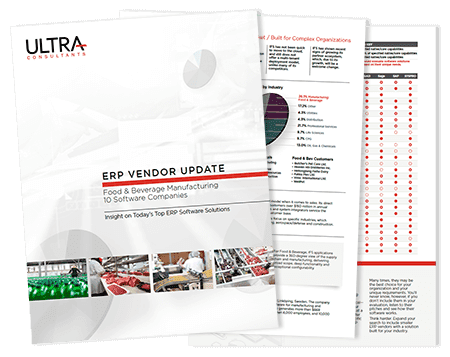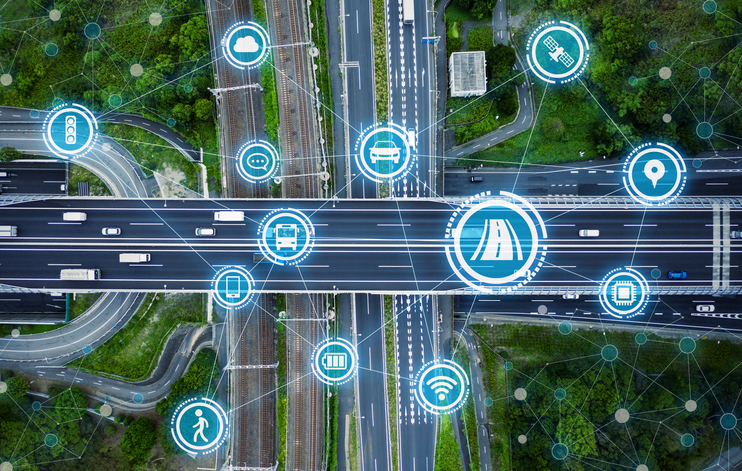By David Saunders, Senior Consultant
If the past year has taught food & beverage executives anything, it’s the value of being able to quickly adapt to changing business conditions. As the industry heads deeper into 2021, what do food & beverage manufacturers, processors and distributors need to know to survive – and thrive – in today’s challenging business environment?

Pandemic Pivots Drive Innovative Routes to Market
Working around ongoing COVID-related issues will require a continued focus on distribution. Early in the pandemic, we saw a wave of online ordering that overwhelmed organizations that didn’t have the right processes and systems in place to respond to a huge jump in demand. We see numbers now that show that online purchases and courier delivery have increased in all verticals — but especially in food & beverage.
Companies with consumer-facing businesses had to quickly adapt to a world where their retail stores were suddenly closed, or people were scared to enter the stores. E-commerce platforms gave them the ability to continue to sell to their customers. And in several instances, we saw manufacturers bypass their distribution channels and sell directly to the consumer. While that is a sound strategic move from the manufacturer’s perspective, it provided an unexpected competitive challenge to distributors.
We need only to look at the Girl Scouts of the USA’s new cookies sales strategy to understand the pervasiveness of go-to-market pivots: Now we can order Girl Scout Cookies for pickup or delivery via Grubhub.
Another example is Uber’s acquisition of Drizzly to enable on-demand consumer fulfillment of alcoholic beverages. Today, creativity is required to work around quarantine issues and support innovative routes to market. Enterprise Resource Planning (ERP), E-commerce and Customer Relationship Management (CRM) solutions – integrated with warehouse and transportation management systems – are necessary to support this innovation.
Understanding Landed Costs in the New Delivery Landscape
One big consequence of the shift to direct delivery is a potential lack of understanding of freight costs, the real cost of delivery to customers, and what that model entails — because software often is not being utilized to manage those types of costs. This is a big problem, as it can result in margin erosion, especially when shipping costs industry-wide are rising.
ERP software can attach the exact small package delivery cost to a sales order. But that key functionality is difficult to achieve if systems are not integrated. Without the integration, small package costs at the order level are often lumped into one general ledger account. This prevents a true picture of a profitability.
If your current systems are unable to track the exact shipping costs to a sales order, an option might be to calculate an average shipping cost that gets charged to every sales order so that the net effect is your freight costs have a neutral impact on overall profitability. Calculating this on a zone basis will allow you to be more precise in your shipping cost calculation.
Sourcing Flexibility and Demand Visibility Become Paramount
We have seen extensive shortages of basic ingredients such as flour and yeast, and products such as disinfectants and toilet paper. Companies need to revamp their sourcing strategies to ensure agility and stability in managing these increased demands, while also safeguarding organizational risk. Being able to quickly source alternative suppliers is key, as is being able to streamline supplier onboarding and contracting. An important first step is to evaluate your suppliers and segment them on criteria such as profitability impact or strategic importance versus supply risk or dependence on a supplier.
Prior to COVID, a manufacturer would ask distributors how much they planned to buy, and that demand “forecast” — generally based on previous years — worked well in that stable environment. But during the pandemic, and with huge supply and demand fluctuations, traditional demand models are no longer

ERP Vendor Update: Food & Beverage Manufacturing
Food & Beverage companies — big, medium, and small — are looking at modern ERP solutions to help them manage more effectively, streamline key functions, and accelerate core processes. What is the best choice for your new or replacement ERP solution?
valid. Short of an alternative way to forecast demand, many companies have indicated that they are relying on patterns prior to 2020 but understand they may need to respond quickly.
Distribution channels have been massively disrupted and are fluid. And to operate effectively in this environment requires tracking and analysis. Without the means to systematically calculate demand, responding to changes will be challenging. This is all about detecting signals for changes in demand for forecasting as soon as possible. Having modern tools such as advanced forecasting and demand planning can enable companies to develop what-if scenarios and better respond to demand fluctuations.
Food Safety is an Enduring Imperative
Whether it’s a manufacturer selling direct to another business, direct to consumers, or selling to a business that sells to consumers, such as Walmart or Amazon.com, safety is first and foremost in the food & beverage sector.
Having full traceability to comply with guidelines and regulations, which are becoming more stringent, is critical. Processes and procedures must be in place to manage food safety and traceability, and to reduce the risk of costly food safety recalls or regulatory infractions.
The ability to track products and ingredients both upstream and downstream — from raw ingredients to the finished goods and back – is critical. Data from all points in the supply chain must be recorded to provide an audit trail. Modern ERP systems can help your organization access, aggregate and analyze this information.
Fortune Favors the Brave in the New Normal
As you consider these pandemic pivots and adaptations, we have one piece of advice: Don’t wait for things to go back to normal. Because the reality is that many consumer habits have changed forever.
These shifts present opportunities to consider your organization’s place in the larger industry ecosystem and how you can carve out win-win scenarios. For example, the restaurant model has changed forever. To successfully compete for restaurant business, consider ways to be a partner and help them be successful. Can you offer extended payment terms or other financial benefits?
Fortune favors those companies that can think strategically – and execute flawlessly – in this brave new world. Having the right modern technology in place creates the foundation to enable food & beverage organizations to support both.
This article appeared in the February 22, 2021, issue of Industry Today.
Table of Contents
More ERP material...
Smart Hospitals Start with Smart Systems: Why Modern Healthcare ERP is Critical
Data analytics holds the ability to highlight inefficient manufacturing processes and enable…
Selecting the Right TMS System: Key TMS Features and Trends to Consider
Data analytics holds the ability to highlight inefficient manufacturing processes and enable…
Choosing a CRM System for Your Business
Data analytics holds the ability to highlight inefficient manufacturing processes and enable…



